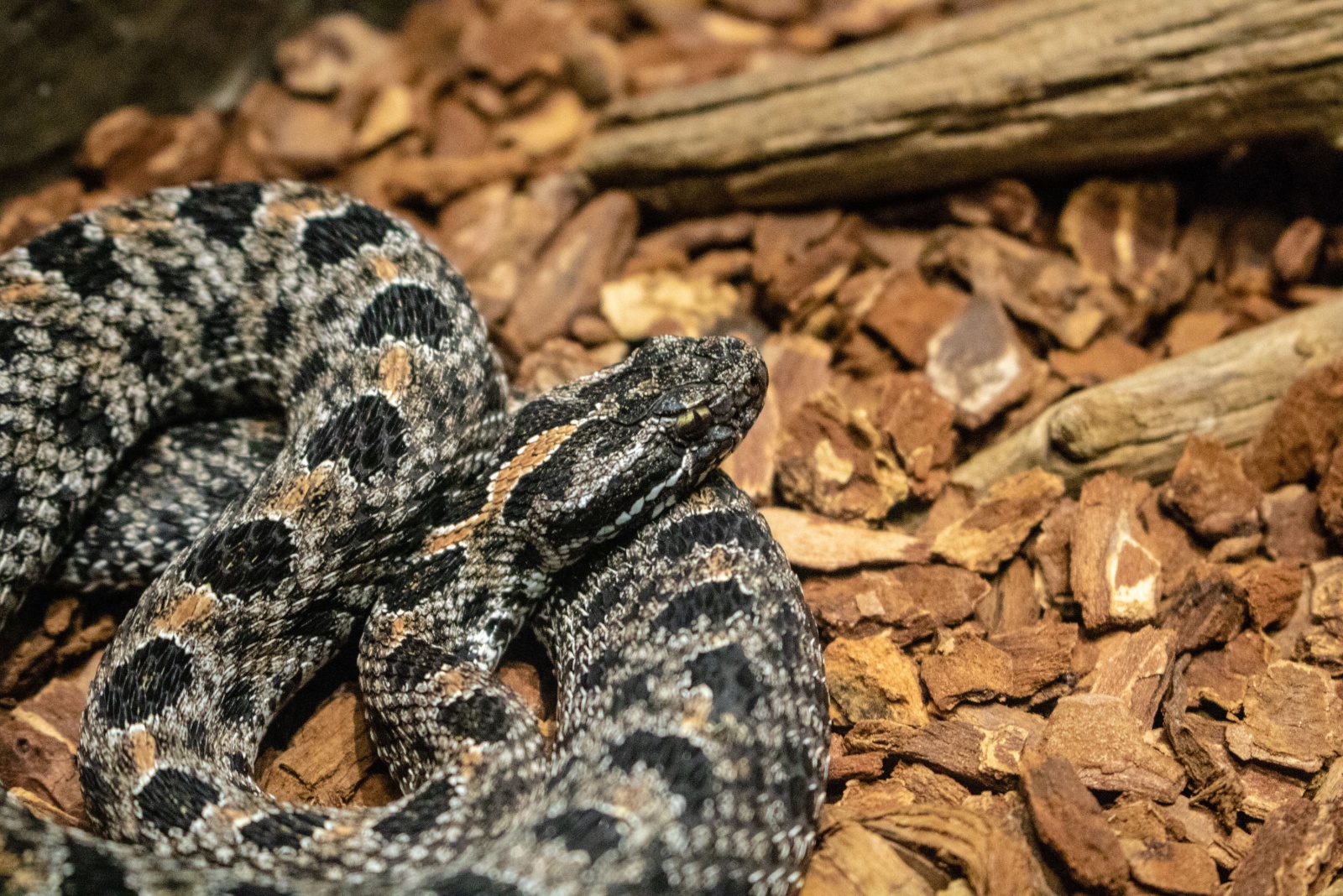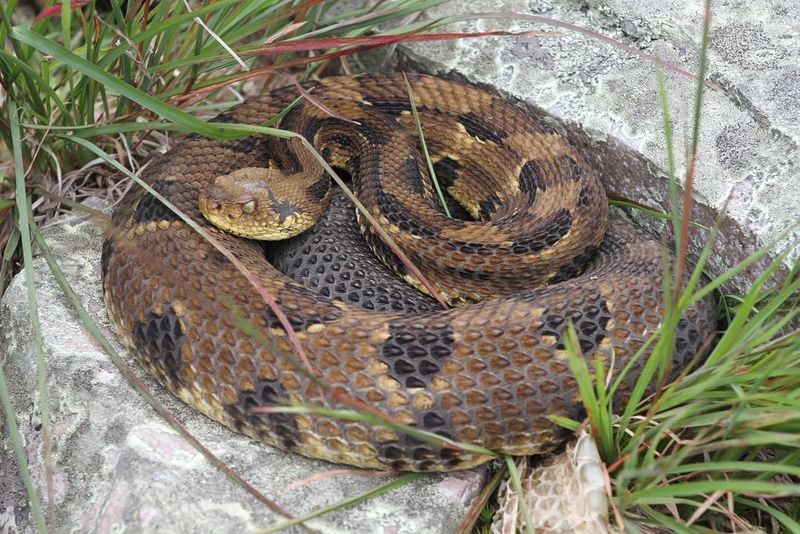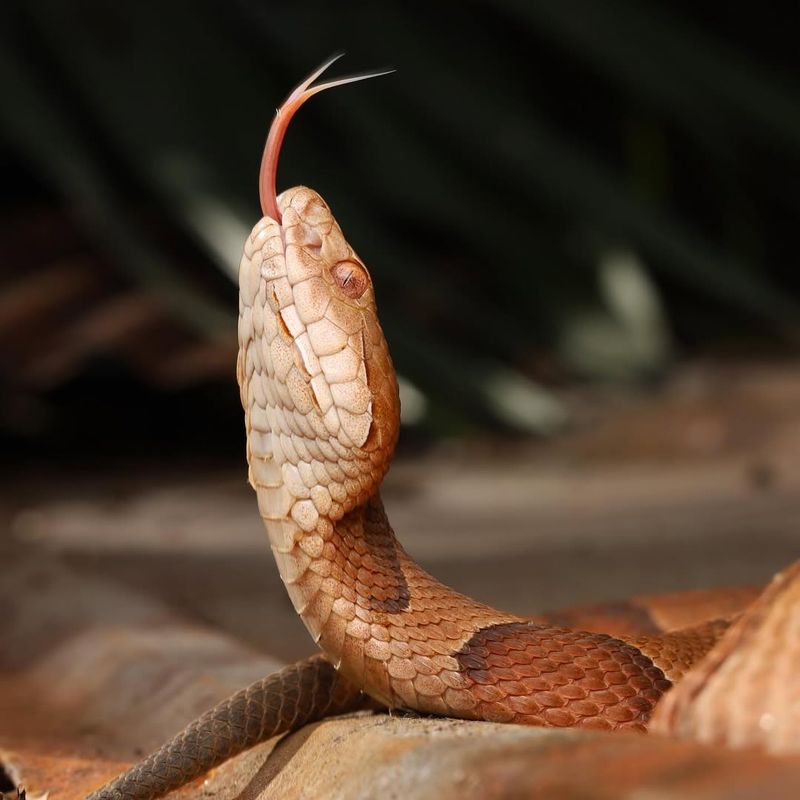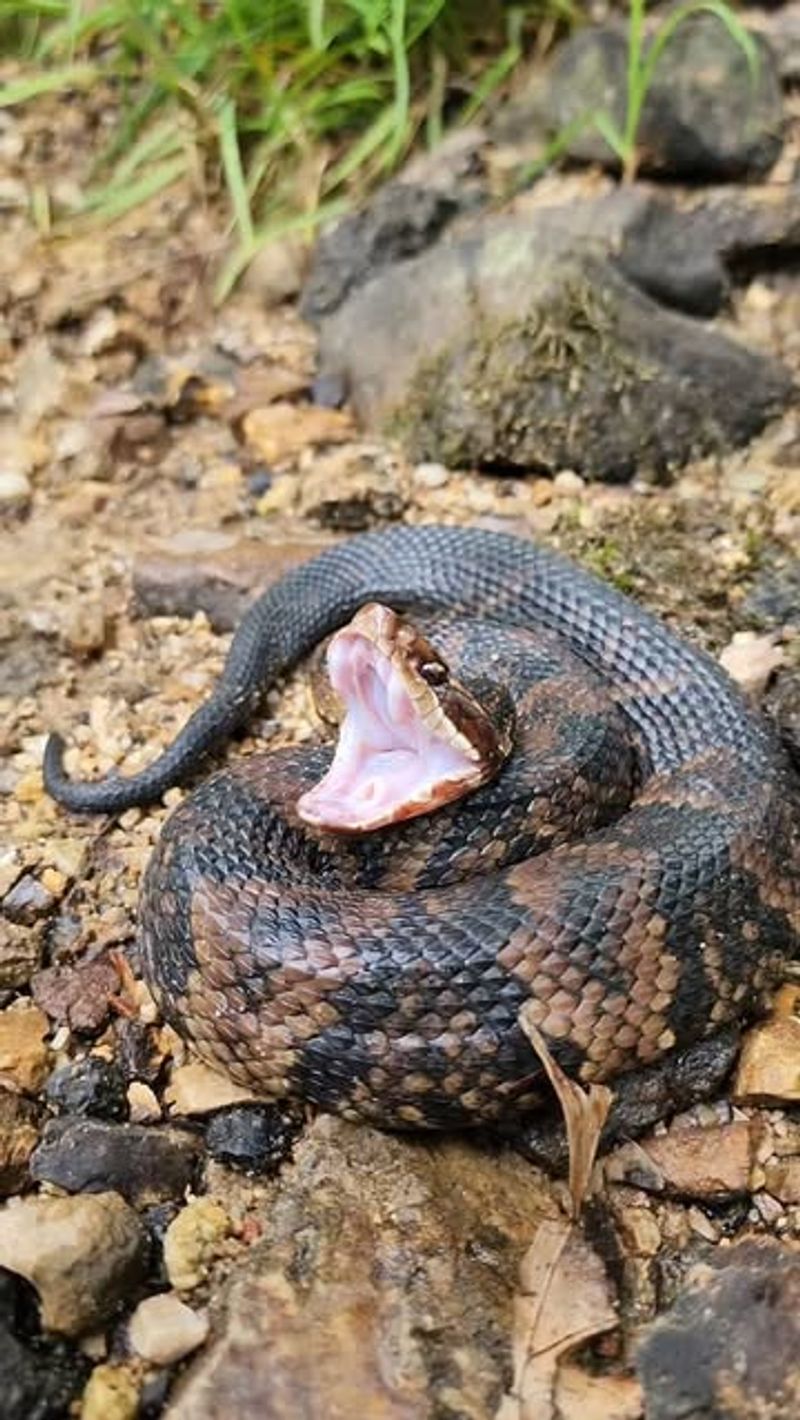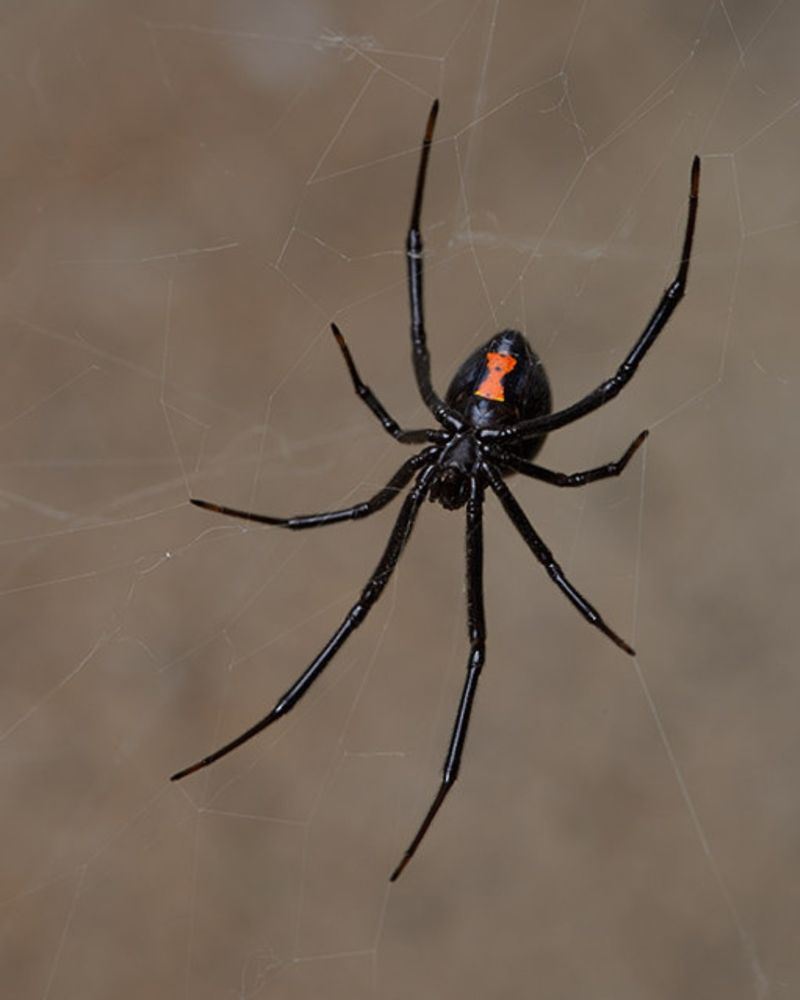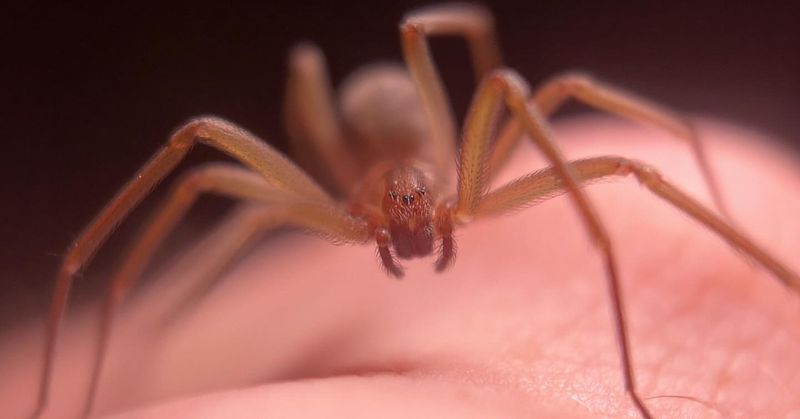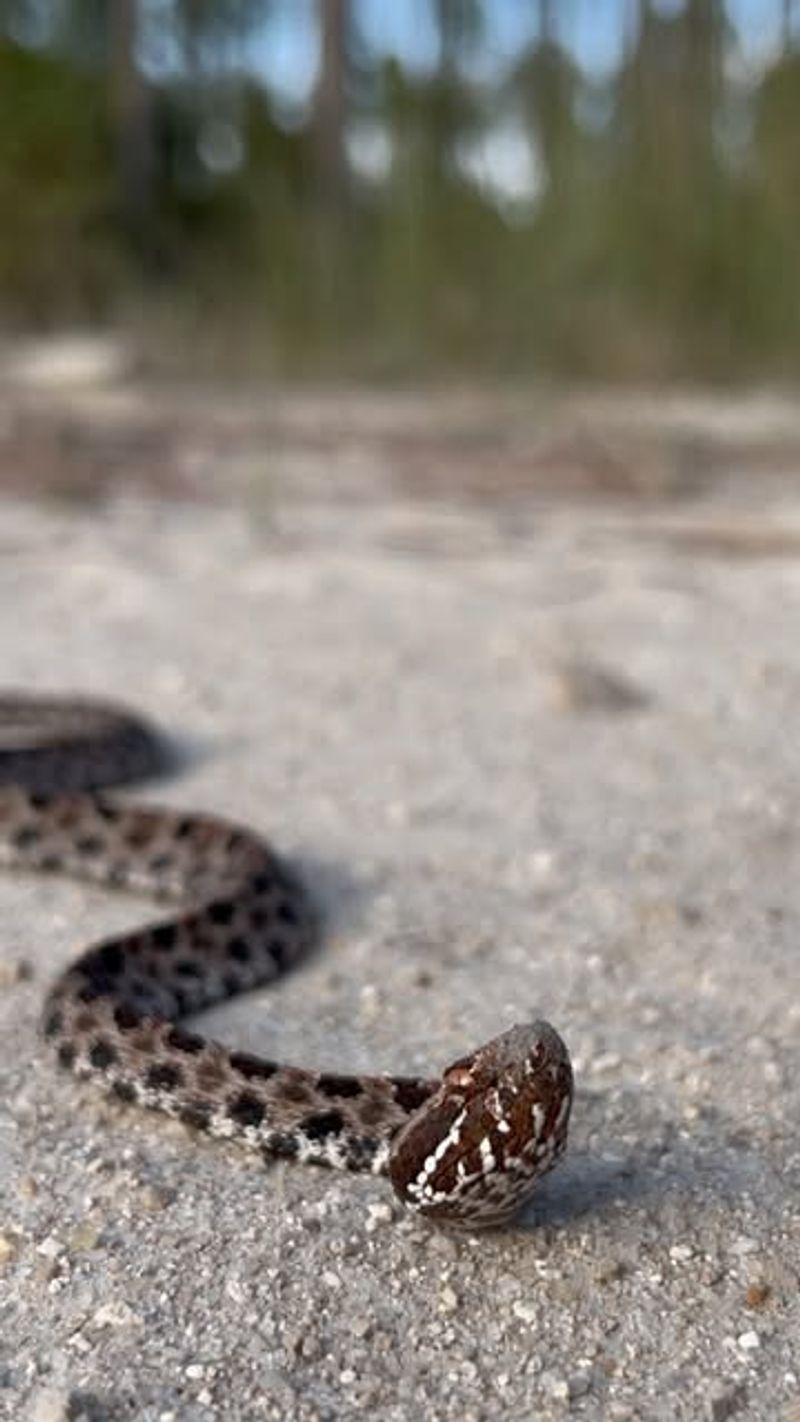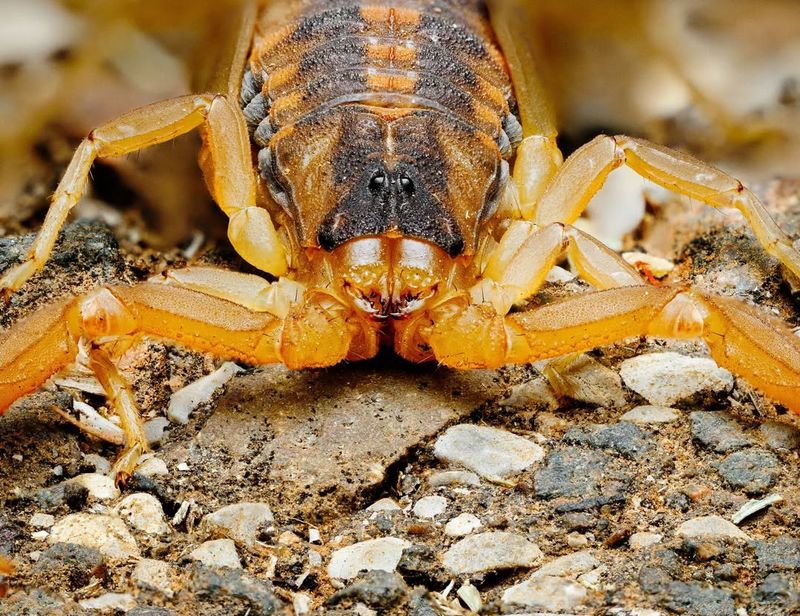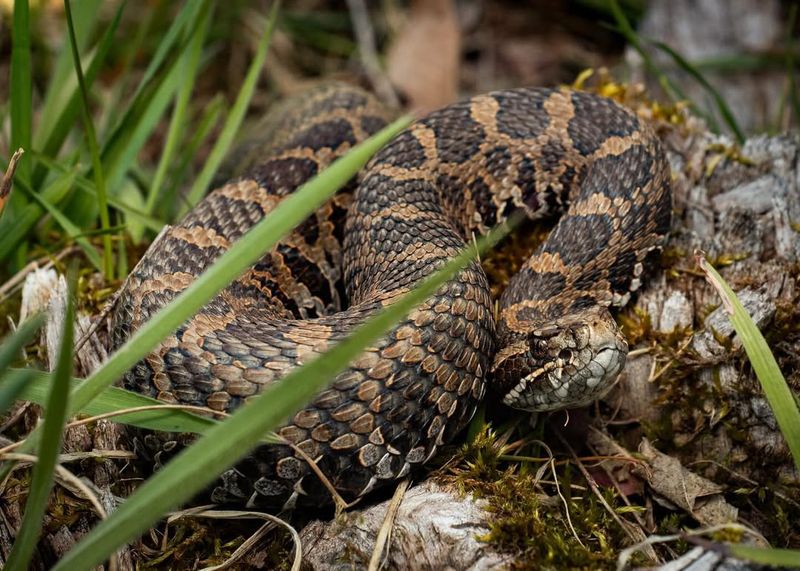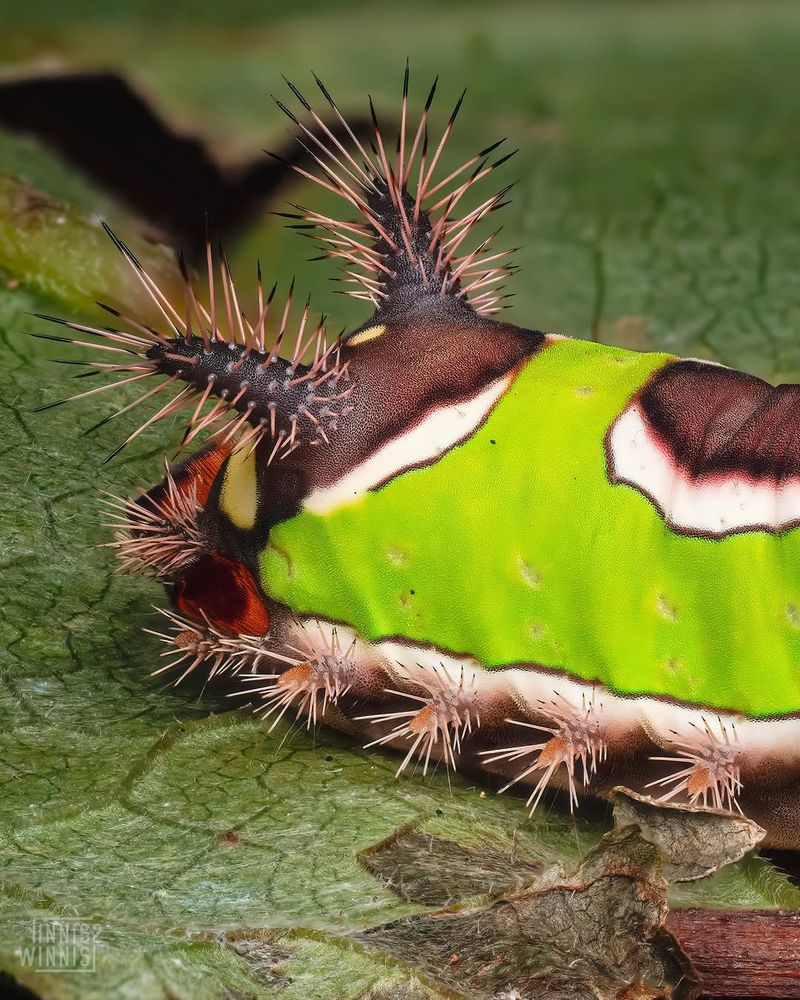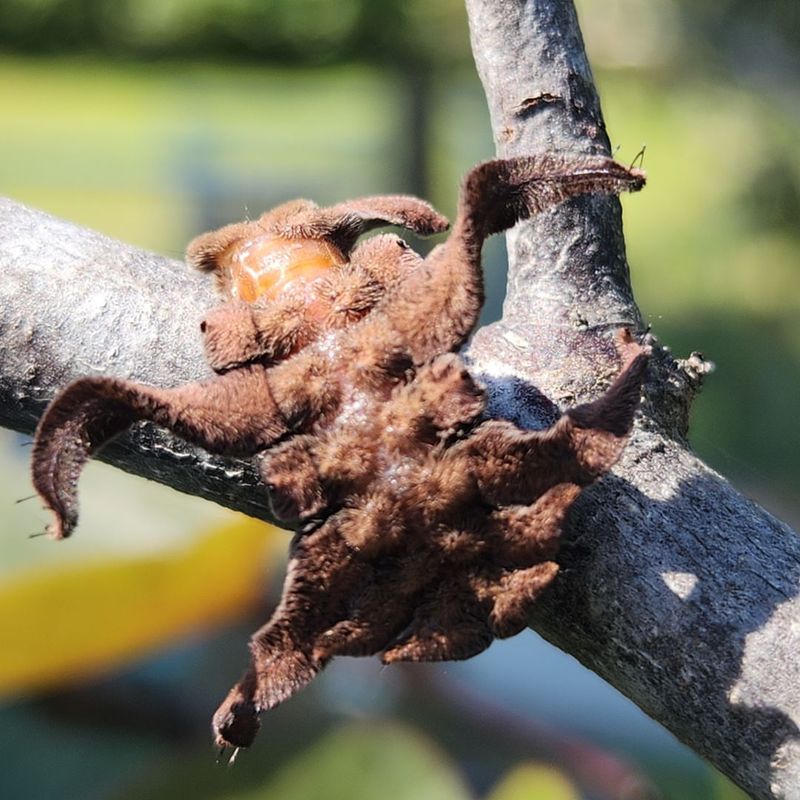Kentucky might be famous for its horses and bluegrass, but the state is also home to some surprisingly dangerous creatures. From slithering snakes to creepy crawlers, venomous animals live in forests, fields, and even backyards across the Bluegrass State.
Knowing what to watch out for can keep you and your family safe during outdoor adventures.
1. Timber Rattlesnake
Forests and rocky hillsides throughout eastern Kentucky provide perfect homes for this pit viper. Recognizing its dark chevron bands and hearing that famous rattle can save your life.
Most bites happen when people accidentally step too close or try to handle them. Always wear boots when hiking and watch where you place your hands on rocks.
If you spot one, back away slowly and give it plenty of space to escape.
2. Copperhead Snake
With hourglass-shaped bands in shades of copper and brown, this snake blends perfectly into leaf litter. Many people walk right past them without ever knowing.
Copperheads rarely strike unless threatened, preferring to freeze and rely on camouflage. Their venom causes painful swelling but is rarely life-threatening to healthy adults.
Kentucky gardens, woodpiles, and stone walls attract these hunters because mice and insects gather there too.
3. Northern Cottonmouth
Swamps and slow-moving streams in far western Kentucky host this aggressive water snake. When threatened, it opens wide to reveal a bright white mouth that looks like cotton.
Unlike harmless water snakes, cottonmouths hold their ground instead of fleeing. Their thick bodies and dark coloring help identify them from a distance.
Avoid wading in murky water where visibility is poor, especially during warm summer months.
4. Black Widow Spider
Shiny black bodies with a red hourglass underneath make female black widows easy to identify. Males are smaller and harmless, but females pack a neurotoxic punch.
Garages, sheds, and outdoor furniture provide ideal hiding spots for these shy spiders. They build messy, irregular webs low to the ground.
Wearing gloves when reaching into dark spaces and shaking out shoes before wearing them prevents most bites.
5. Brown Recluse Spider
Look for a dark violin shape on the back of this tan spider. Six eyes arranged in pairs distinguish it from harmless spiders with eight eyes.
Basements, attics, and cluttered storage areas attract these secretive hunters. Bites often happen when people put on clothing where spiders have hidden overnight.
Their venom destroys tissue, sometimes creating wounds that take months to heal properly and may require medical attention.
6. Pygmy Rattlesnake
Barely longer than a ruler, this miniature rattler packs venom just like its larger cousins. Kentucky grasslands and pine forests near water sources provide ideal hunting grounds.
Its tiny rattle sounds more like buzzing insects than the warning you might expect. Gray or reddish coloring with dark blotches helps it disappear among rocks and vegetation.
Because of their small size, people sometimes mistake them for harmless snakes and handle them carelessly.
7. Striped Bark Scorpion
Kentucky’s only scorpion species glows bright green under ultraviolet light, making nighttime searches easier. Two dark stripes run down its pale yellow back.
Rock crevices, loose bark, and building foundations shelter these nocturnal hunters. They climb walls easily and sometimes enter homes searching for insects.
Stings feel like bee stings for most people, causing localized pain and swelling. Shake out camping gear and check shoes when staying outdoors.
8. Eastern Massasauga Rattlesnake
Kentucky wetlands and marshy areas once hosted healthy populations, but habitat loss has made this rattler extremely rare. Large plates on top of the head distinguish it from other rattlesnakes.
Gray bodies with dark saddle-shaped blotches provide excellent camouflage in cattails and tall grass. Conservation efforts aim to protect remaining populations.
If you encounter one, consider yourself lucky to witness an endangered species, but maintain a respectful distance always.
9. Saddleback Caterpillar
Bright green with a prominent brown saddle marking, this caterpillar looks harmless but hides venomous spines. Gardens, parks, and forests throughout Kentucky host these unusual larvae.
Touching the hollow spines injects venom that causes immediate burning pain, swelling, and sometimes nausea. The sensation resembles a bee sting but lasts longer.
Teach children to admire caterpillars without touching them. Remove affected clothing carefully and apply ice to reduce pain and swelling.
10. Hag Moth Caterpillar
Nicknamed the monkey slug, this weird caterpillar barely looks real. Fleshy, twisted appendages covered in stinging hairs extend from all sides like a tiny alien.
Kentucky shrubs and small trees in gardens and forest edges provide feeding sites. Brown coloring helps them blend with dead leaves and bark.
Contact causes irritation similar to other stinging caterpillars but less severe. Their bizarre appearance often fascinates observers who resist touching them anyway.

